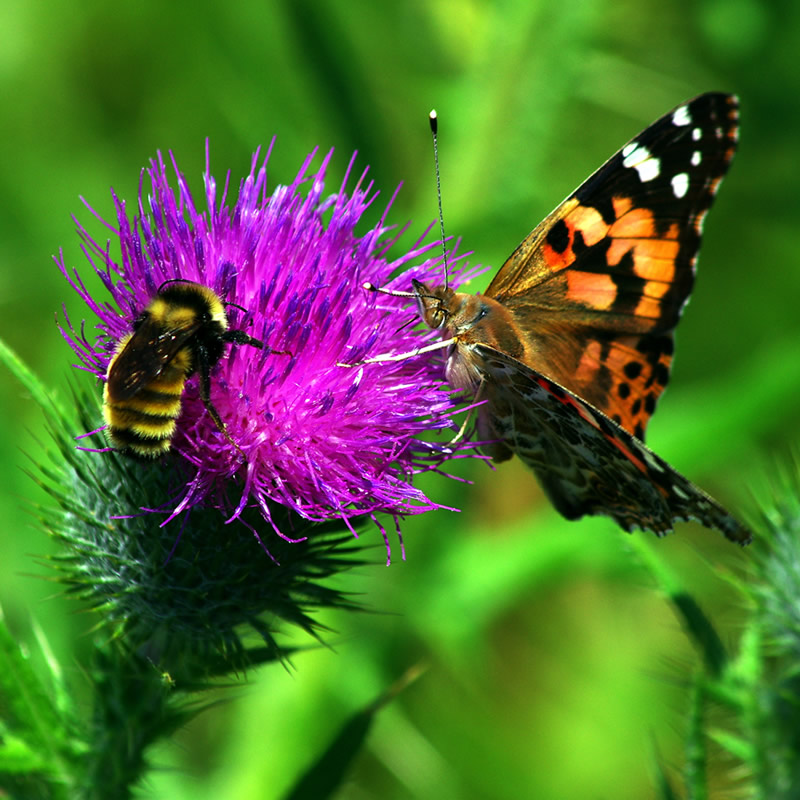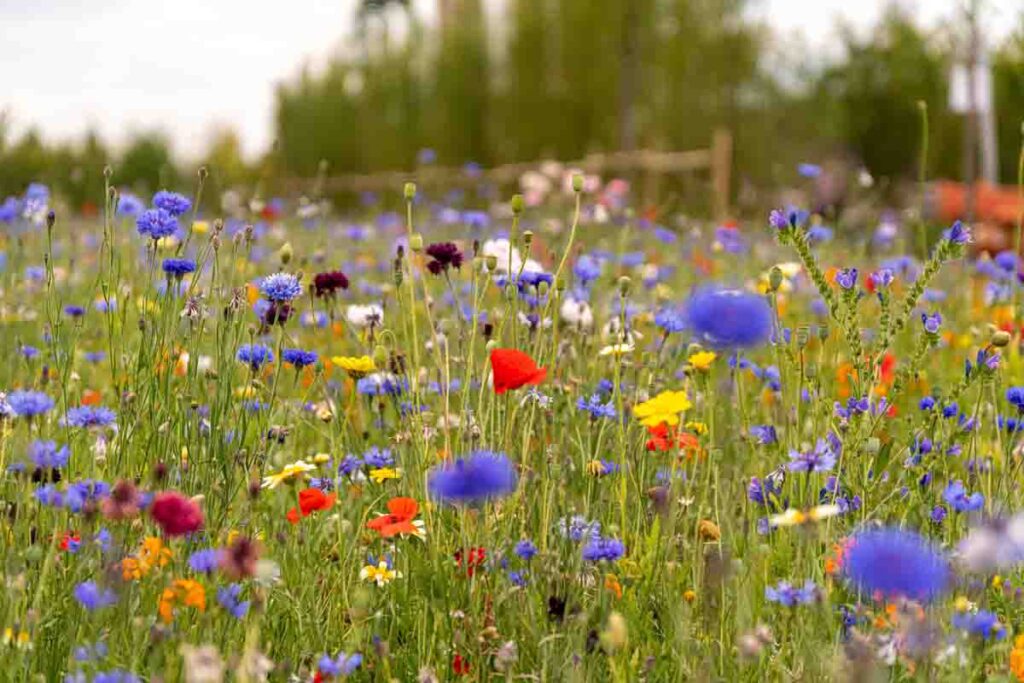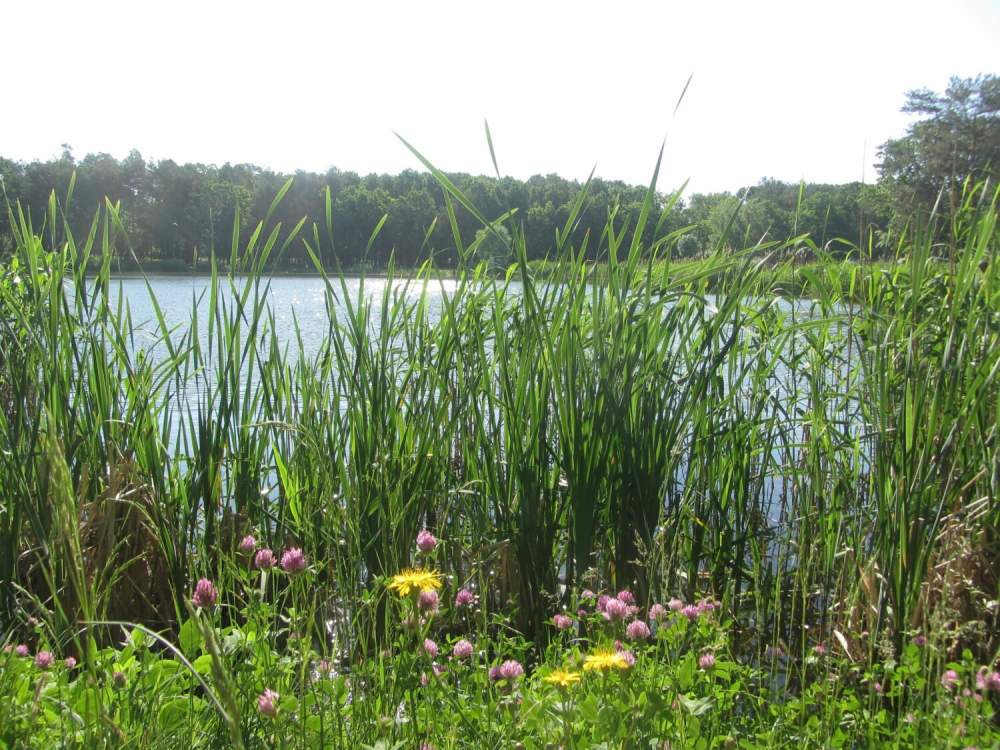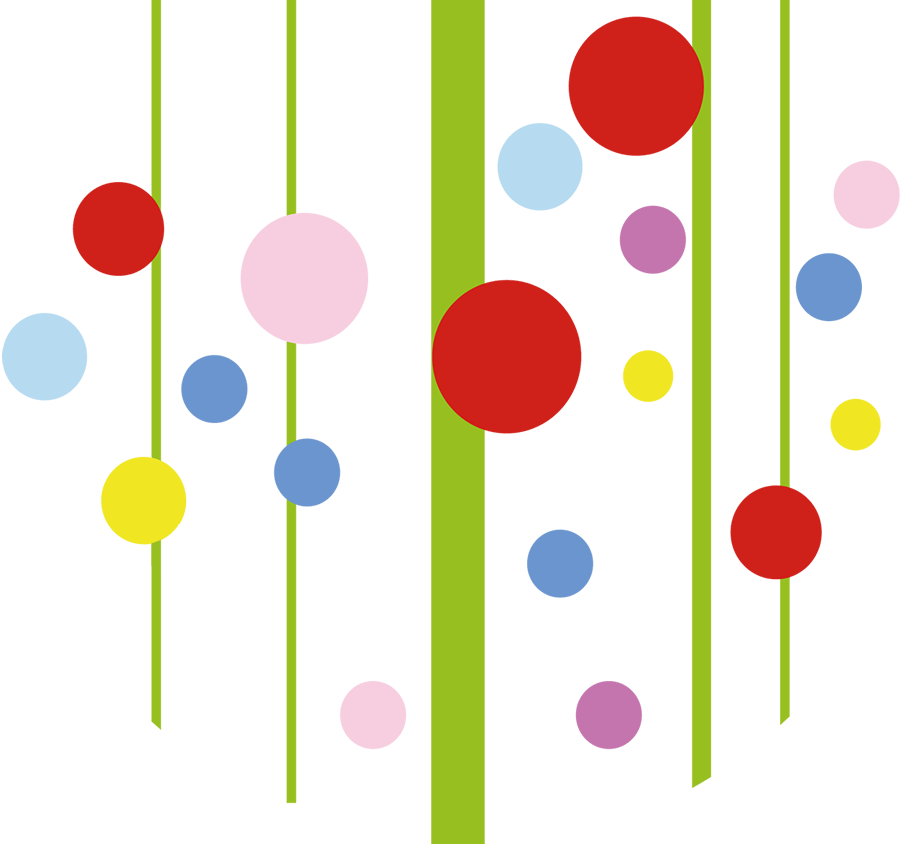Welcoming Wings: Create a Haven for Bees, Butterflies and Beneficial Bugs Using UK Native Wildflower Species
In recent years, you’ve probably noticed fewer bees and butterflies flitting about your yard. Their populations are declining due to habitat loss, pesticide use, and climate change.
But you can make a difference by creating a welcoming oasis in your garden. Planting native wildflowers, shrubs, and trees is one of the best ways to attract and support bees, butterflies, and other beneficial bugs. Not only will your yard be bursting with colour and life, but you’ll also be helping restore biodiversity and the health of our ecosystems.
Consider swapping some of your lawn or non-native plants this spring for gorgeous native wildflower species. Your winged visitors and the birds, small mammals, and other wildlife that depend on them will thank you. Every small act of conservation matters, so spread your wings and turn your outdoor space into a haven.
Choose Native Wildflowers That Attract Bees, Butterflies and Other Pollinators
If you want to create a welcoming habitat for pollinators in your yard, choose native wildflowers. Native species are well-adapted to your local climate and soil conditions, so they’re low maintenance. They also provide the nectar and pollen that native bees, butterflies, and other beneficial insects need to thrive.
Absolutely! Bees and butterflies play crucial pollination roles and help maintain ecosystem biodiversity. Planting native wildflowers is one of the best ways to support these vital pollinators. Here’s a list of UK native wildflowers that are particularly attractive to bees and butterflies:
1. Foxglove (Digitalis purpurea): Tall spikes of pink or white tubular flowers bees love.
2. Red Clover (Trifolium pratense): A popular choice for bees, it’s also a nitrogen-fixer, which is good for the soil.
3. Common Knapweed (Centaurea nigra): Blue or purple thistle-like flowers that are a magnet for various pollinators.

4. Bird’s-foot Trefoil (Lotus corniculatus): Often referred to as ‘eggs and bacon’, this yellow and orange flower attracts bees.
5. Bugle (Ajuga reptans): Produces blue flower spikes that bees and butterflies love.
6. Field Scabious (Knautia arvensis): Offers lavender-blue flowers that butterflies find irresistible.
7. Lady’s Bedstraw (Galium verum): A fragrant yellow flower that attracts various insects.
8. Musk Mallow (Malva moschata): A pink flowering plant beloved by bees and butterflies.
9. Ox-eye Daisy (Leucanthemum vulgare): Classic white daisies that attract various pollinators.
10. Purple Loosestrife (Lythrum salicaria): Its tall spikes of pinky-purple flowers attract bees and butterflies.
11. Ragged Robin (Lychnis flos-cuculi): Its distinctive pink flowers are a favourite of long-tongued bees.
12. Teasel (Dipsacus fullonum): While bees enjoy the flowers, goldfinches are attracted to the seeds in the autumn.
13. Wild Marjoram (Origanum vulgare): A favourite of both bees and butterflies.
14. Viper’s Bugloss (Echium vulgare): Vibrant blue flowers that are particularly attractive to bees.
15. Meadow Cranesbill (Geranium pratense): A beautiful blue wildflower that attracts various pollinators.
16. Wild Thyme (Thymus polytrichus): Bees love the nectar from its pink-purple flowers.
17. Hemp Agrimony (Eupatorium cannabinum): This plant is especially popular with butterflies with its fluffy pink flower heads.
18. Devil’s-bit Scabious (Succisa pratensis): Its blue flower heads are a favourite for butterflies.
19. Butterfly Bush (Buddleja davidii): Although it’s not native to the UK, it has become naturalized and is famous for attracting butterflies, hence the name.
20. Comfrey (Symphytum officinale): Its bell-shaped flowers are a favourite among bees.
When planting bees and butterflies, it’s essential to offer a variety of wildflowers that bloom at different times to provide a continuous food source throughout the season. Also, avoid using pesticides or herbicides, as these can harm pollinators.
By including a variety of wildflowers that bloom from spring through fall, you can provide continuous nourishment for local pollinators. Group plantings together since pollinators prefer more extensive stands of the same type of flower. And avoid using pesticides, which harm beneficial insects as well as pests.
With the suitable wildflowers and environment, you’ll welcome winged visitors to your garden in no time. And by supporting native pollinators, you’ll be helping maintain biodiversity and the health of our ecosystems.
Create a Pollinator-Friendly Habitat in Your Field or Garden

To create a welcoming habitat for pollinators in your yard, choose native wildflowers. Local wildflowers adapted to your climate will attract more bees, butterflies, and beneficial insects.
Plant clusters of the same type of flower together. This makes it easier for pollinators to find the flowers and feed on them.
Avoid spraying pesticides in your garden since they kill pollinators and their food sources. Also, include a shallow water source, like a bird bath with stones. Pollinators need access to water too.
Once your habitat is established, sit back and enjoy watching the bees, butterflies, and birds that visit your garden. Creating a pollinator-friendly space benefits the environment and brings natural beauty to your yard. Every little bit of habitat helps support biodiversity, so do your part and start planting today!
Provide Resources Like Water, Shelter and Overwintering Sites to Support Bees and Butterflies
Providing the essentials for bees and butterflies will make your garden irresistible to these crucial pollinators.
Water
A clean, shallow water source is vital, especially in hot or dry weather. Place a bird bath, dish of stones, or a fountain near your wildflower garden.
Change the water frequently and rinse the bath to prevent mosquito larvae. Butterflies prefer damp sand or mud, so a dish of wet sand also works well.

Shelter
Bees and butterflies need protection from harsh weather and predators. Plant dense shrubs, brambles or trellises around the perimeter of your garden to act as windbreaks. Include plants of varying heights to create sheltered niches. Evergreens also provide year-round shelter. Rotting logs, brush piles, and rock walls create hiding spots, overwintering sites and places for butterflies to pupate into chrysalises.
Host Plants
By providing the basics that bees, butterflies and other beneficial insects need to thrive, your wildflower garden will become an ecologically vibrant space, supporting natural biodiversity in your area. With shelter, sustenance and breeding spots in place, you’ll welcome wings and ensure these fragile pollinators have a place to call home.
A Vibrant, Lively Garden and a Haven for Bees and Butterflies
So what are you waiting for? Transform that unused garden patch into an inviting oasis for our buzzing and fluttering friends. Start by choosing a few native wildflowers that appeal to you and will thrive in your area.
Once established, the wildflowers will spread independently, creating a welcoming habitat that gives back in many ways. Before you know it, you’ll have a lively, colourful garden filled with the sounds and sights of happy pollinators that call your space home. By providing them shelter and sustenance, you’ll be rewarded with a vibrant, lively garden and the satisfaction of knowing you made a difference for these beneficial bugs we need so much.
Creating a haven for bees, butterflies, and other pollinators is one of the most rewarding gifts we can give to our environment. Why not get started today? Your garden will thank you, and so will the bees and butterflies.


